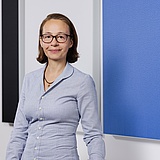

Introduction
An invention is patentable only if it meets the requirements for protection, including novelty and inventive step. In this context, determining whether the claimed invention is part of the so-called state of the art is essential.
On June 27, 2023, new questions were referred to the Enlarged Board of Appeals of the European Patent Office (G1/23). The questions concern the determination of the state of the art in view of the commercial availability of a product prior to the filing date/priority date of a patent.
Legal context
Under Art. 54(2) of the European Patent Convention (EPC), the state of the art is defined as comprising "everything made available to the public by means of a written or oral description, by use, or in any other way, before the filing date of the European patent application [or its priority date]."
On the other hand, and with regard to the concept of sufficiency of disclosure, a given piece of information will only be considered to be publicly available and, therefore, be part of the state of the art to the extent that it is sufficiently complete to enable the person skilled in the art, at the relevant date and taking into account the general knowledge in the specific field at the time, to put into practice the technical teaching which is the subject of the disclosure, without undue effort being required.
In the event that a document discloses technical matter that is relevant to the determination of novelty and inventive step of the claimed invention, the document will be considered as prior art only if the disclosure enables the person skilled in the art to reproduce the teachings contained therein based on general technical knowledge in the technical field (sufficient disclosure).
It should be noted, however, that technical teachings will not necessarily be considered part of the prior art simply because something has been disclosed. Where the realization of the technical teachings would require excessive efforts, the disclosed technical matter will not be considered state of the art (due to insufficient disclosure).
In a judgment handed down three decades ago (G1/92), the EPO's Enlarged Board of Appeal dealt with the interpretation of the requirement of "made available to the public" referred to in Art. 54(2) EPC. On that occasion, it ruled that the chemical composition of a product should be considered part of the prior art when the product is available to the public and can be analyzed and reproduced by one skilled in the art without undue burden:
"An essential purpose of any technical teaching is to enable the person skilled in the art to produce or use a specific product by applying this teaching. Where such teaching results from a product put on the market, the person skilled in the art will have to rely on his common technical knowledge to gather all information necessary to produce said product. Where it is possible for the person skilled in the art to discover the composition or the internal structure of the product and to reproduce it without undue burden, then both the product and its composition or internal structure are state of the art." [translated from reason 1.4 of the original decision in German language]
Thus, it was held that the chemical composition of a product is prior art if the product itself is available to the public and can be analyzed and reproduced by a person skilled in the art, regardless of whether there are specific reasons to analyze the composition.
The case (T 0438/19)
The present case concerns the opposition appeal proceedings against the decision of the Opposition Division concerning European patent EP 2 626 911. The patent relates to polymers for coating and protecting solar cells in solar panels. Claim 1, as granted, claims a material for encapsulating a solar cell, comprising a specific polymer material.
The acknowledgment of the inventive step ultimately depended on determining whether the prior use of a polymer called "ENGAGE® 8400", which was undisputedly commercially available to the public before the priority date of the patent, would be part of the prior art.
The Appellant argued that "ENGAGE® 8400" polymer was commercially available and part of the prior art before the effective date of the patent.
The Patentee argued that the commercialization of the polymer "ENGAGE® 8400" before the priority date would not provide sufficient disclosure of the polymer composition, as the product could not be reproduced by the person skilled in the art solely on the basis of general technical knowledge, i.e., in the absence of knowledge of the synthesis conditions, such as the specific catalysts and reaction conditions.
In the pending case, the Board of Appeal systematized the requirements laid down in G1/92 and identified divergences in the case law concerning the interpretation of each of the requirements.
Especially relevant is how the term "available to the public" should be interpreted. The question that arises here, and which has been generating divergent case law, is that if the chemical composition/internal structure of a product made available before the filing date of the patent application cannot be determined by the person skilled in the art without undue burden, whether only its chemical composition/internal structure should be excluded from the prior art (see T 370/02, T 2045/09, T 1833/14 and T 0023/11) or whether both the product itself and its chemical composition/internal structure should be excluded from the prior art (T 946/04, T 1666/16).
In view of the case at hand, if ENGAGE® 8400 is considered as part of the prior art, even if its chemical composition or internal structure is not, the product may be considered for the assessment of inventive step since the technical information reported in other documents of the prior art, including its possible uses and advantages, makes it of special interest to the skilled person in the field.
The alleged situation of legal uncertainty generated by the divergent interpretations prompted the Board of Appeal to refer the following preliminary questions to the Enlarged Board of Appeal, which fulfills, among others, the function of ensuring the uniform application of the EPO legislation:
The referral has already practical consequences: In view of the referral's potential impact, the EPO President has decided to stay ex officio all examination and opposition proceedings before the EPO in which the decision depends entirely on its outcome (https://new.epo.org/xx/legal/official-journal/2023/07/a68/2023-a68.pdf). We will provide further updates.